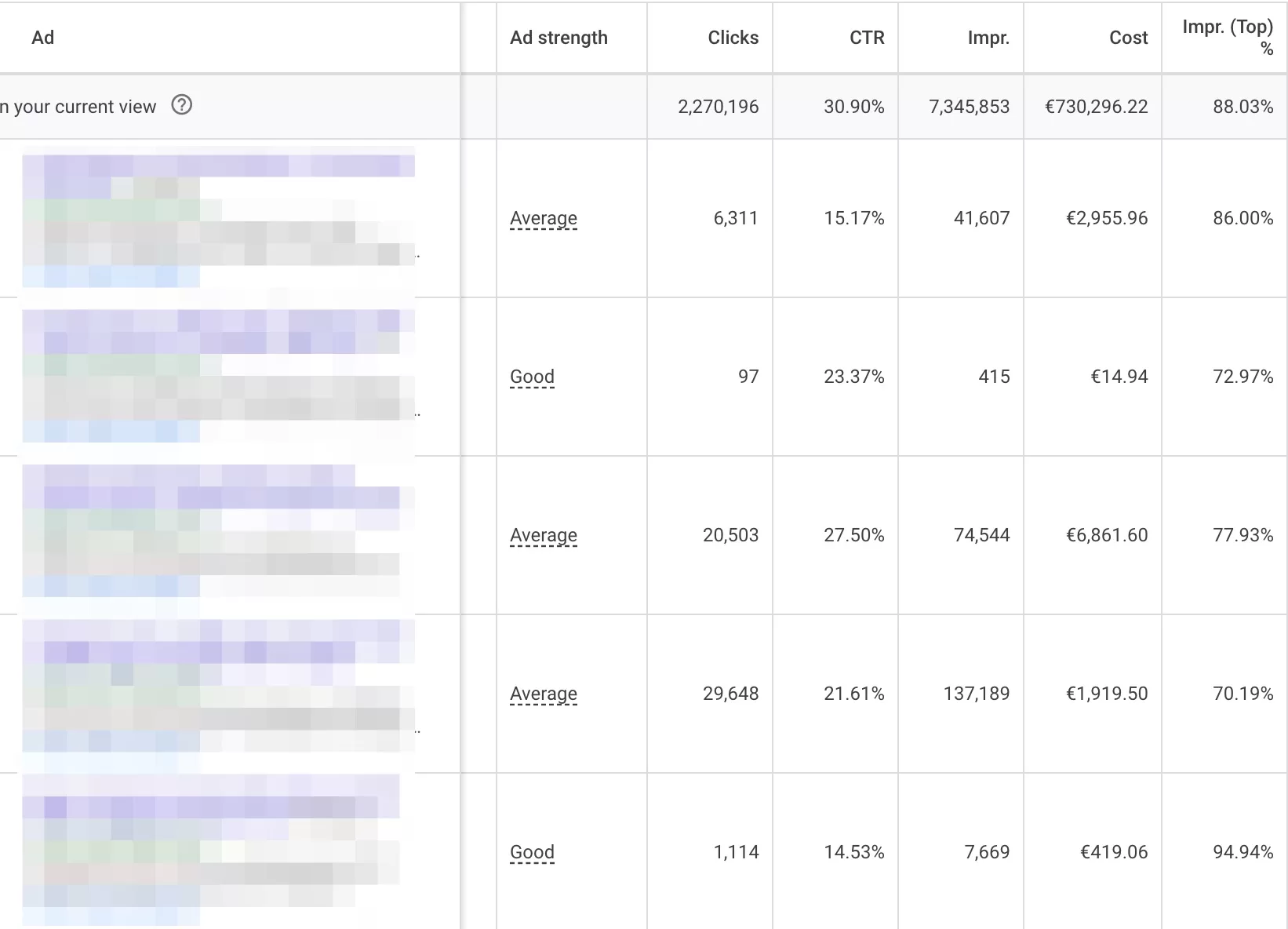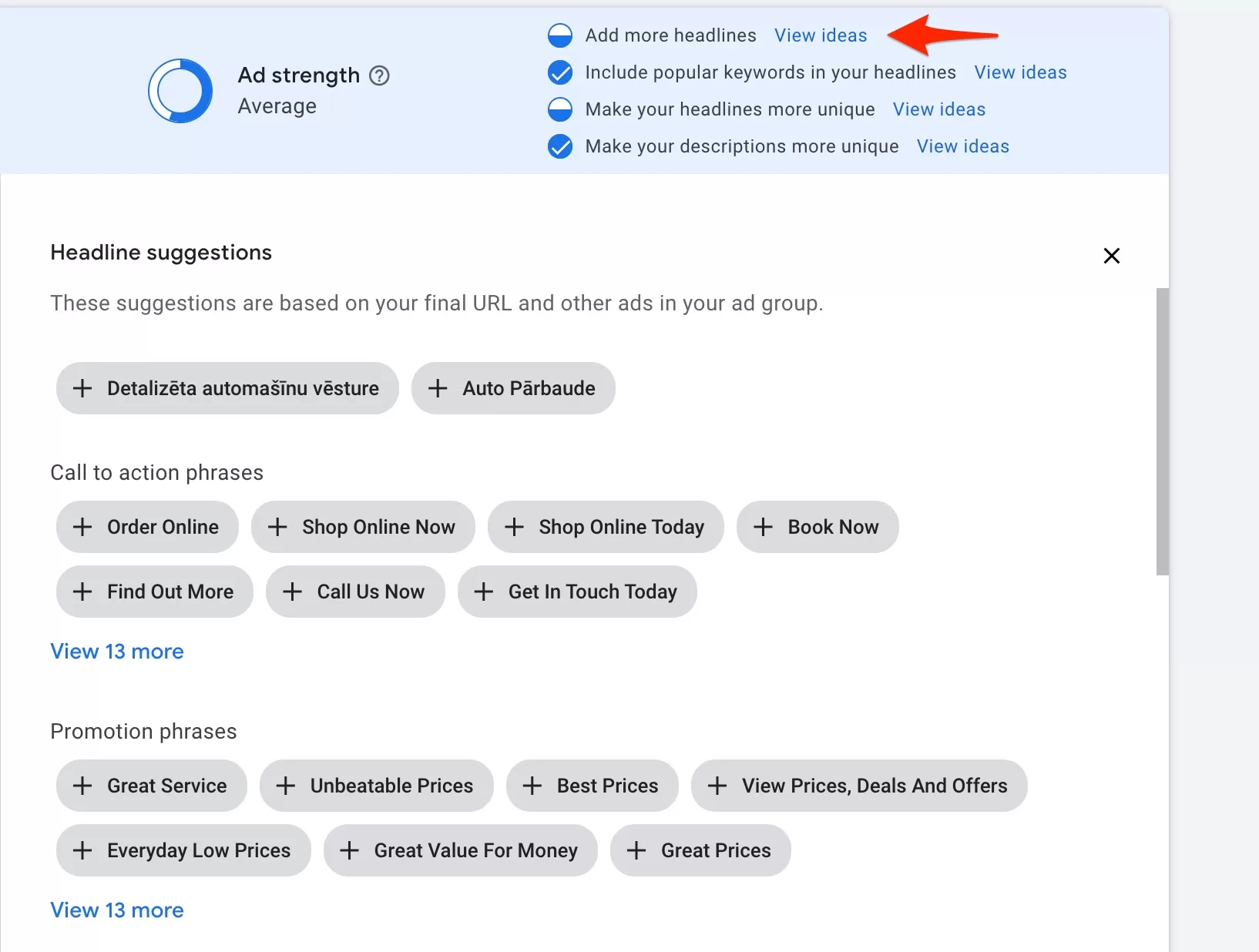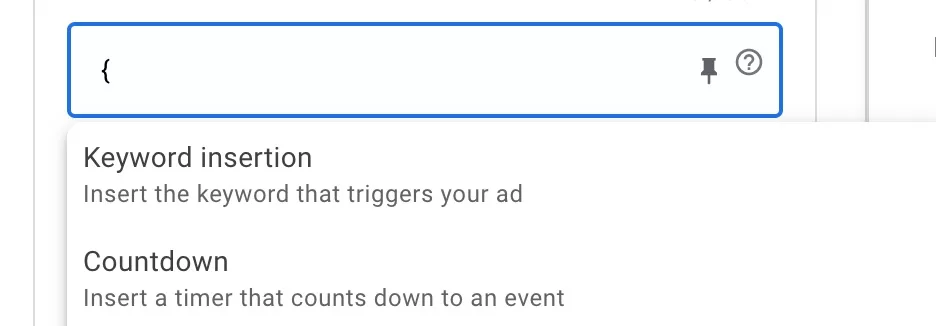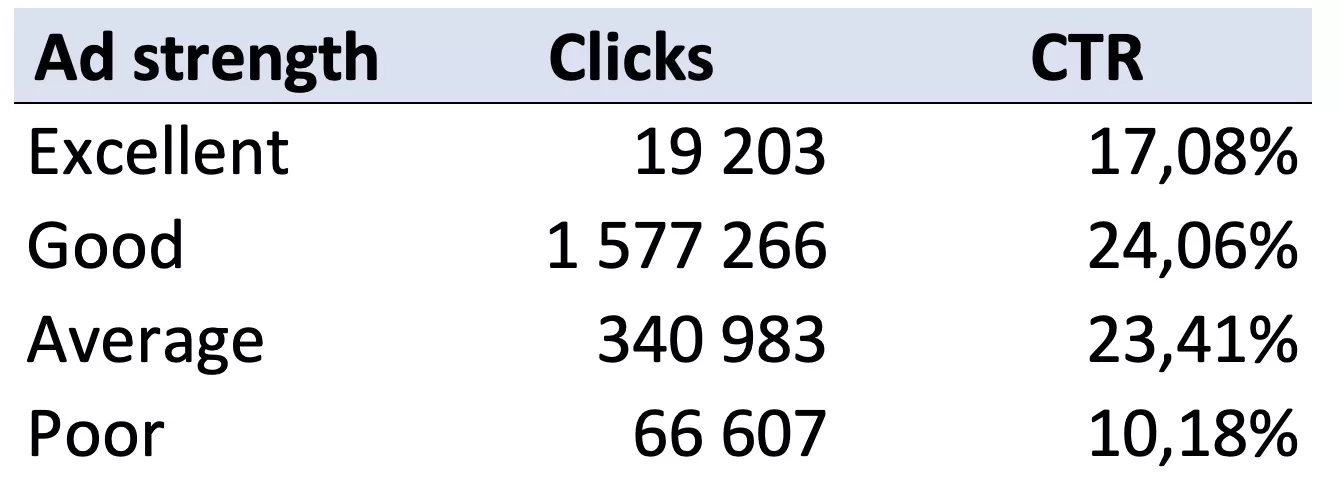
Anyone doing Google Search ads will tell you that ads are a very important part of your campaign success. Good ads mean, higher CTR (click-through rate), and higher CTR means more clicks. And hopefully, those clicks turn into sales.
Sounds simple enough, right? And in a way, it is. Google has many tools to help you write better ads. Not to mention tons of articles about how to write perfect search ads. Even I wrote a guide about responsive search ads.
Furthermore, Google has a so-called Ad strength indicator, which shows how good your ads are. Well, sort of.
Today, we’re going to look at exactly that – ad strength. What is it? How to improve it? And should you obsess about it?
What is Search Ads strength?
When you write your ads you have to base them of from your keywords. Ideally, you include those keywords in the headline and/or description to make the ad more relevant.
Here’s the definition of Ad strength according to Google:
“Ad strength is an indication of the relevance and diversity of your ad combinations. Having more relevant and unique content can help you get the right ad in front of your customers and improve your ad’s performance.”
If you created at least one ad, you might have seen this:

As soon as you start writing headline and descriptions, Google wills tart evaluating your ad and showing you it’s strength. Also, on the right you see what might be missing from “perfect” ad. In the instance above, I need not only to add more headlines, but to make them more unique.
Google will allow you to continue and save those ads, no matter their strength. After all, it’s your advertising money. But most would recommend at least getting to average strength.
Google ad strength ranges from from “Incomplete”, “Poor”, “Average”, “Good” to “Excellent,” this metric measures the relevance, quality, and diversity of your ad copy.
The reason Google has it, its because they want you to follow Search ads best practices. And following them ca help you to maximize your ad’s performance.
And Google claims, that:
“Advertisers who improve Ad Strength for their responsive search ads from “Poor” to “Excellent” see 12% more conversions on average*. (*Source: Google Internal Data. Date range: Feb 28, 2023 to Mar 1, 2023)” .
We will put that to the test later in the post.
You can also add an extra column in your account to see the ad strength of all your ads. Go to Ads, then click on Columns, find Attributes section, and select ad strength. This is what you should see:

Next to each of your ad, you will be able to see it’s strength. Makes it quite easy to make comparisons and spot the differences between poor and excelent ads.
How can you improve Search Ads strength?
Should you improve ad strength? Yes. In general, if you ask me this question about anything, my answer will always be “yes”. However, there is always a matter of how much you should improve something.
So how can you improve ad strength?
Add more headlines and descriptions
This is an easy one, I mentioned that above. But it does work well. Search ads have a max of 15 headlines and 4 descriptions. I’m not saying you should go to the max. But make sure the blue tick is marked next to “ad more headlines” when creating an ad.
Use Google Suggestions
Google offers you some help in writing headlines and descriptions. The (possible) downside is it’s mostly in english. But if you click the link “view ideas”, you will get plenty of suggestions. If you’re writing ads in any language besides english, use Google translator, or just do it your self. It still is a great way to come up with different headlines.

Add keywords insertion
This is my favorite hack. 9 out of 10 times, immediately goes one level up. If you’re not familiar with keywords insertion this might be a bit confusing. I promise to write a post on this explaining everything. But for now, just know that you can use an option to insert any keyword from your ad group to your ad. Google will pick a keywords from you ad group and when i matches to users search query, will insert it into the headline.

Unpin headlines
If you have headlines that are pinned to a certain position, unpin them. It should help with ad strength instantly.
Think about your business
You should do that right from the start, but in case you forgot, always go back to your business. Usually every business is unique in some way. Use that in the ads and it should help you not only stand out when users search, but also increase ad strength.
Honestly, there isn’t a lot to it. You should do fine with the suggestions above.
Search Ads strength test
Now to the interesting part. I always like to test things and find out for my self if whatever Google or someone else recommends is actually working for the business I work with.
For the record, I believe and always recommend improving your ads, and making sure your headlines are unique, interesting and attracting clicks. This is a part of any account optimization. What I’m doing here is trying to understand how much “excellent” is better then “poor” or “average”.
So I put the ad strength to the test with 2 million+ clicks, within last 3 months. Well, during the summer.
I have a lot of different ads for different countries. As I mentioned during the test all ads got 2 015 271 clicks, to be exact. I think this is a decent amount of clicks so we could draw some conclusions.
CTR (click-through rate)
Let’s look at CTR first. To those who don’t know it shows how many people click on your ad, after it was shown. Expressed in percentages. 100 impression of the ad, 10 clicks, your CTR is 10%.

As you can see the highest CTR was from ads with “good” ad strength, 24%. It was 40% higher, than from “excellent” ads. Shouldn’t it be the other way around.
Even the ads with an “average” strength had higher CTR, only slight lower than “good” ads.
Only “poor” ads performed worse than any other. Which should not be a surprise.
Takeaway: “good” and “average” strength ads can have higher CTR than “excellent”.
Conversion rate
Let’s move on to a more important metrics – conversion rate. CTR is a great metric to see how your ads perform, and what you should optimise. But for the business its very important to understand if the ads are converting.
Assumption is here the same. The worse the ad strength, the lower the conversion should be. Right? Not quite.

The highest conversion rate is form the ads with “good” ad strength. “Excellent” ad strength ads, had the lowest conversion rate. Even lower than ads with “poor” ad strength.
Again, goes to show you that ad strength is not everything.
Conclusion: “good” ad strength ads win again.
Cost per conversion
And our final metric – cost per conversion. How much money are you paying for each conversion. This is one of the most important metrics, because as a business owner you want to know if the dollars you’re spending on ads, bring in enough value. If you pay too much for each conversion (sale, for example). It might mean that you’re loosing money with each sale. And that’s not good.
The price per conversion does not differ by much, because this particular account is heavily optimised (manually, FYI) towards cost per conversion. It’s very important for the business to acquire users for a specific price.

In any case, we see that the lowest cost per conversion is with “good” ad strength ads. Yes, it’s only pennies, but this account have 20-30k conversions per month. If my acquisition cos with “good” ads is lower by $0.18, then I save about $5 400 per month or $60k per year.
Only “average” strength ads had higher CPA (cost per action).
Conclusion: again “excellent” strength ads, are not the best in terms of bringing cheaper conversion.
What this means for you?
“Great test Rokas, what now?” I get it. Let’s summarise, as we went through a lot of numbers. At the end of the day, what you want to know what can you do with all this information.
The answer is that you don’t have to obsess about the ad strength. Especially when starting out. Get them to average and move on. Don’t get stuck in trying to be perfect. More often than not, good enough is, well, better than excellent.
A lot of people try to create this perfect ad according to Google. That’s nice, but you might be wasting valuable time. Time that can be spent optimising, landing pages, making better product, optimising keywords or just resting.
When I was starting out, I would read every tip, trick, or best practice. Only later I realised that in a way you have to create best practices for each business. Yes, some of the things work for everyone. But usually, you have to find what works for particular client or business. And that is only possible by testing things, and not following everything blindly.
If you’re reading this post, amazing, thank you. But don’t take my word for it. Go into your account, check your ads, create new ones that are better and see if this improves your business results.
Good luck and let me know how it goes.
I share weekly tips on how to create, manage, and scale Google Ads campaigns. Subscribe to my free newsletter.
I’m also down with connecting on LinkedIn.
Or follow me on X, for some quick updates and fast insights.